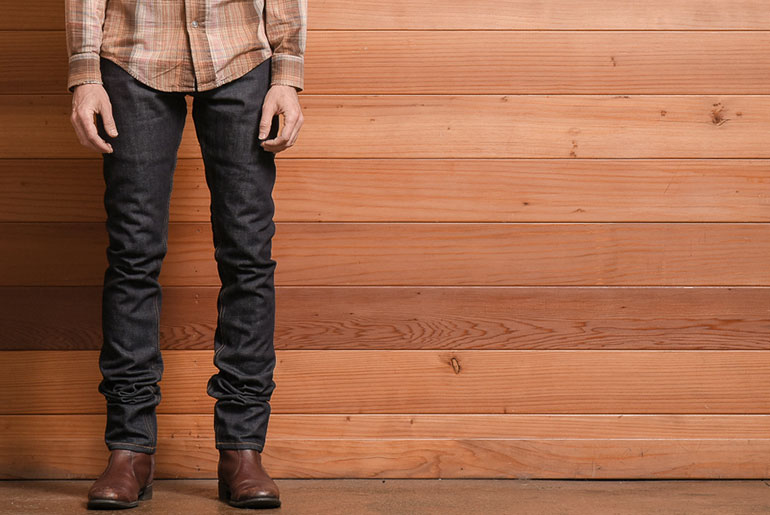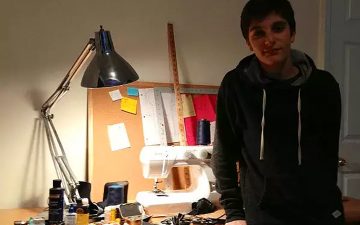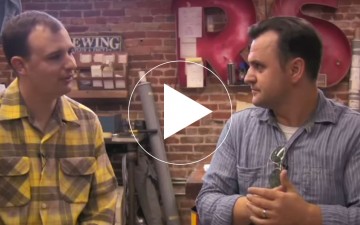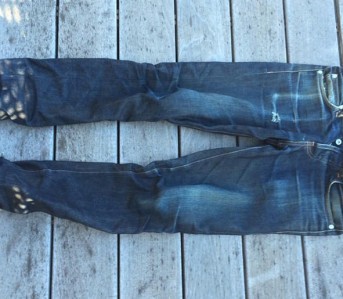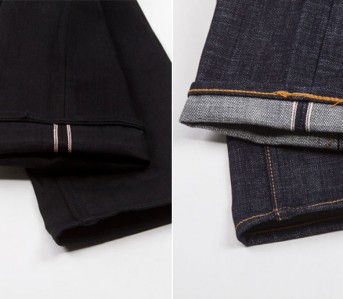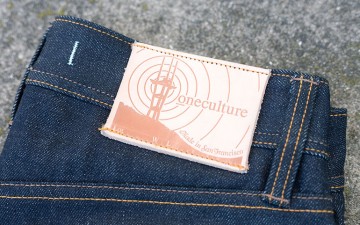
Many of the designers we meet reference vintage workwear, skateboarding, and Steve McQueen when talking about their influences. Rare is the chance we get to talk to a brand that takes its cues from action figures and cartoons from the 1970s, but today is such a day.
Mark Carter draws on the inspirations from his childhood in front of the television in San Francisco to inform the jeans in his brand oneculture (you may remember our profile from earlier this year). There are no shortage of raw denim brands operating out of the Bay Area, but Mark does things a little bit differently. Read on and hear all about them.
Heddels: How did you get your start in denim?
Mark Carter: Well, first off, hello everyone! My name is Mark, and I’m a creative, Bay Area native. I was that kid in your elementary school class who could draw really well. Organically speaking, art is what drew me to the denim industry.
With specific regard to manufacturing, the idea sprang from a mixture of boredom and creativity. I was laid off from a dull office manager position at a small medical testing company back in early 2004. And in the idle time that followed I’d decided to entertain a long since tucked away idea of designing clothes for myself. That’s the straight-to-the-point version. I didn’t discover the joys of raw denim until 2006.
H: What was it about raw denim, specifically, that grabbed you?
MC: Okay, let’s first trace the path to my discovery of raw denim…
Prior to researching the market, I hadn’t heard of a single contemporary denim brand. I was your typical department store consumer. I’d just known of traditional fare: Levi’s, Calvin Klein, Lee, Gap, etc. Shameful, I know–haha! But that’s how out of the loop I was. None of that mattered though, as I was thrilled at the possibility of at last being able to express myself for a living.
I immediately hit the streets in order to people watch. San Francisco is perhaps the most fashionable spot in the Bay Area. I would stop people on the streets in order to, 1) find out what they were wearing, and 2) ask about what their favorite denim brands were and, more importantly, “Why?”.
The first contemporary brand I’d heard of was Scott Morrison’s paperdenim&cloth. I’d learned of all the non-raw brands first, namely, all the LA stuff that was popular at the time: Seven For All Mankind, True Religion, etc. Then I found Diesel, which became my first (denim) love. I then took to exploring the local boutiques; places like Rolo, Villains and AB Fits, where I discovered brands like Rogan and G-Star. I was a kid in a candy store! These were exciting times for me. Again, this was 2004, and I had no idea that there’d been some sort of denim boom happening. I was such a sap, haha…
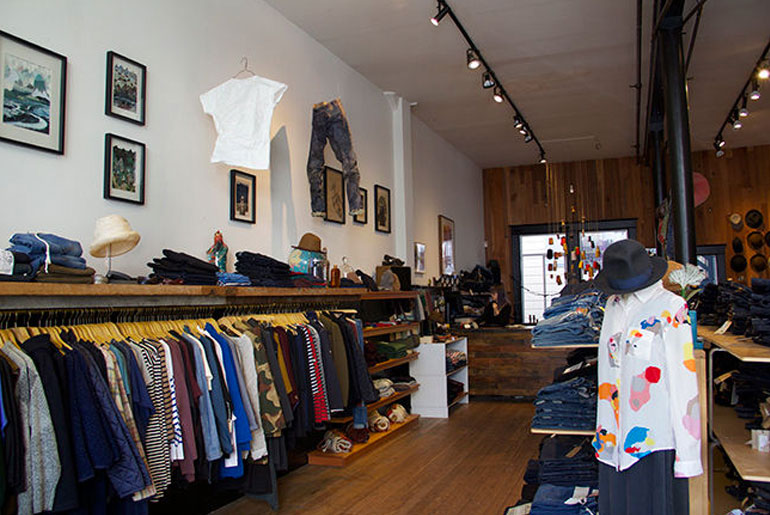
San Francisco’s AB Fits – one denim boutique that served as inspiration for Carter.
In 2006, I’d begun seeing more and more magazine ads for Nudie Jeans. Upon researching it, I found the mynudies denim forum (and later, Style Forum and SuFu). The forums were my intro to the hardcore world of raw denim. And to think that all the information I’d needed was right there all along, at the click of a finger! But I don’t regret my initial path. It allowed me to develop my own ideas rather than to become influenced by a singular mindset and aesthetic.
What intrigued me about raw denim was its character; the textures, weaves, weights and the way it behaved over time. I saw in its diversity the perfect way in which to add another layer of emotional depth to what I was trying to do. I became hooked!
H: How did you come up with the brand name, “oneculture”?
MC: Creating a brand name was my first design challenge. I’d learned to think critically from having briefly studied civil engineering at Berkeley. I understood that a brand name sets the tone for whatever comes after it, so I took it very seriously.
Furthermore, I had a solid understanding of ‘tone’ and ‘flow’ from having twice read William Zinsser’s “On Writing Well”. As such, I wanted a name with a good flow; something that would flow easily over your lips. I didn’t want my name to become fashionably shortened, which meant that it couldn’t be too wordy. I wanted those who spoke about my brand to say the entire name with no effort. That covers the mechanics…
Now as for the statement itself, although I was confident in my intuitive abilities, I was rather insecure with regard to my place in the industry. I was an outsider; an unemployed nobody with no credentials, connections or industry knowledge what so ever. So I wanted to create a presence that spoke boldly. My attempt was to tie together all things denim in the form of a short, concise statement. I became fixated on the words “one” and “culture”, later opting to combine them in order to send a more potent message—“oneculture” is a collective reference to the denim lovers of the world. I loved it. I went into developing my product in the same manner.
H: After spending some time on your blog (documenting the last 8-9 years of your and oneculture’s life), it’s clear that starting and running one culture has been a complete roller coaster ride. If you could go back in time and do it all over again, what would you do differently? Could you share some of the best decisions you’ve made, as well as some of the worst?
MC: Wow! Okay, if I could change anything, I wouldn’t have released that fall 2008 product. It needed lots of editing. That’s what I’ve basically been doing each time out; listening to the feedback and making edits. My goal was/is to edit down to an undeniably, rock solid product.
One financial mistake I’d made that I don’t regret, however, is manufacturing made-to-order. Doing business that way is terribly expensive and it was after I’d done an interview with the Denim Debate in 2011. I didn’t have a website at the time, so people began placing orders through my email address. I had to do *something*, haha…so that’s how I handled it (made to order). I’d take the orders in, ten at a time. I lost money, but I had a great time servicing new customers. No regrets.
H: What is the biggest difference between starting a clothing company nearly 10 years ago versus today?
MC: One major difference is crowdfunding, which gave fledgling manufacturers more options with which to get their projects done. It’s a good thing. Naturally, the scene has gotten far more competitive as a result. That’s the major difference. With so many new brands vying for attention, it’s easy to become lost in the clutter without a little luck, or if what you have to offer doesn’t stand out.
H: Oakland and, to a greater extent, San Francisco play large roles in not just the brand story, but also the creative direction (case in point: Sutro Tower on the leather patch). What is it about the city that influences you? How has SF shaped your decisions as a designer and the development of the brand?
MC: It wasn’t until my third small production (2010) that I decided to do a leather patch. This provided the perfect opportunity in which to incorporate some local flavor into my brand. I wanted to use a landmark that was heartfelt and not as world renown as, say, The Golden Gate Bridge.
Additionally, I wanted something that was not only more personal to me, but locally relevant as well. Twin Peak’s Sutro Tower was perfect. My emotional attachment to it stems from the fact that I was a highly imaginative, latch-key kid who watched lots of television. The Sutro Tower is how we received our TV signals. I was an only child to a single mom, and each day after school I’d arrive home to an empty house while mom was still working. So I’d lose myself within the confines of my favorite children’s programs.

oneculture’s patch featuring the famous Sutro Tower
With specific regard to ‘The City’ and its influence, it’s the birth place of Levi’s! Levi Strauss gave all of us upstarts a career, man, haha! So after giving it some thought, I’d considered SF’s dimensions. San Francisco measures 7 miles by 7 miles at its longest and widest points. So, as a subtle nod, I decided to make the back pocket on my sample size (32 and 33) 7” x 7” at its widest and longest points. There’s also a local magazine called “7×7” which references this as well.
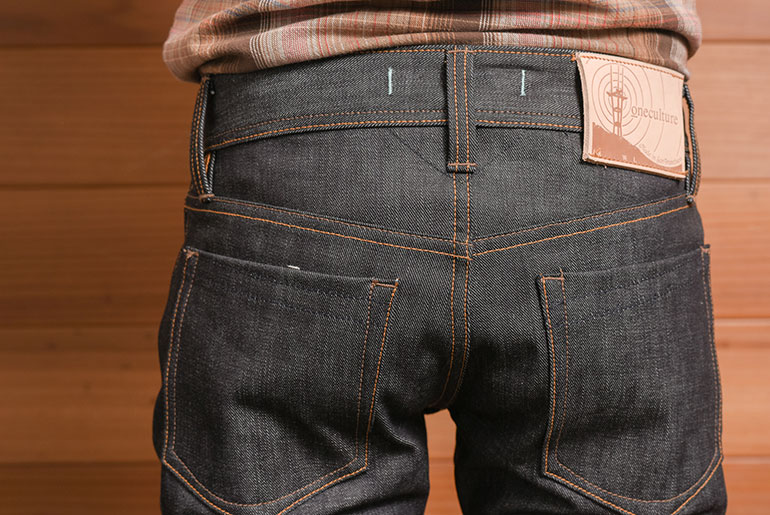
An upclose look the backside of oneculture’s denim and 7×7 back pockets.
Lastly, the Bay Area/Northern California is the birth place of many iconic visionaries; people like Bruce Lee (San Francisco), George Lucas (Modesto) and Russ Meyer (San Leandro) to name a couple.
These guys weren’t guided by ‘market demand’ or overly influenced by ‘the popular thing’. Bruce Lee created his own style of martial arts. The film industry believed George Lucas to be crazy for doing a sci-fi film during the late 70s. Similarly, Russ Meyer thumbed his nose at the establishment altogether, opting instead to do his own low budget, cult classic films. They practically define *badass*! Bay Area legends like these have had a profound influence on me. I embody the same spirit.
H: What other experiences or passions do you draw on for inspiration?
MC: I’m one of the most nostalgic people you’ll ever meet. This spirit generally guides the direction of my line. My products are eccentric mixture of my beaming hometown pride, maniacal 1970s childhood nostalgia and, to some degree, my love of architecture. In addition to our beloved Sutro Tower, the elements I choose to convey my point of view are my favorite childhood actions figures and decade-defining thread colors.
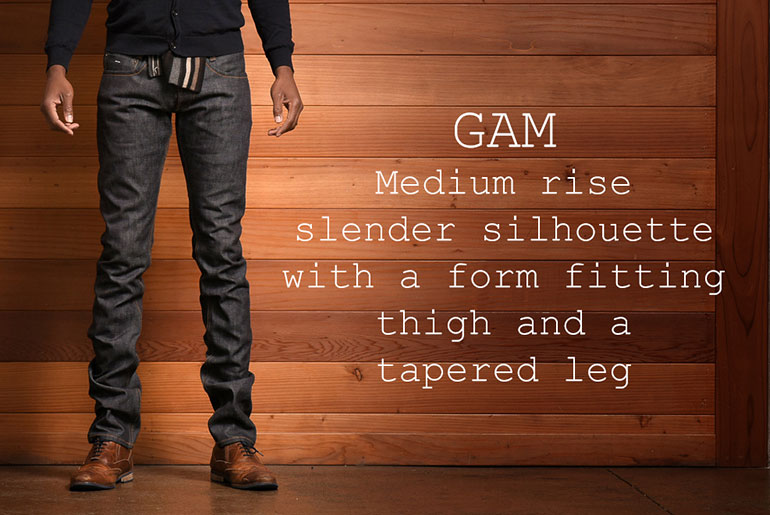
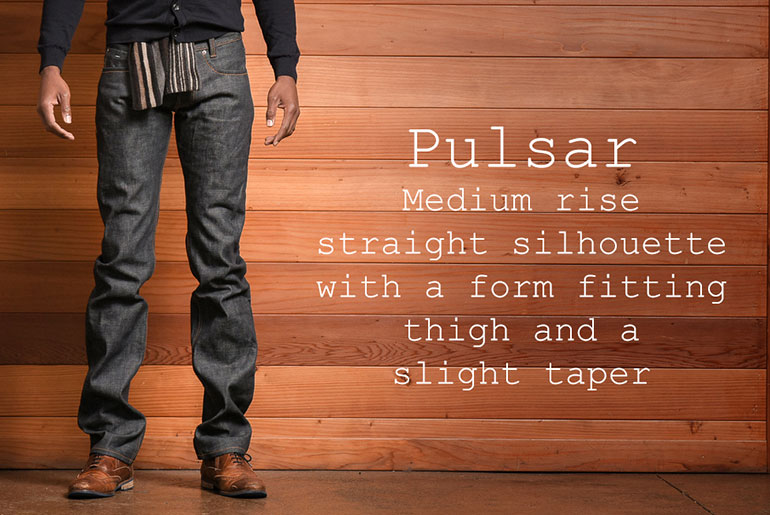
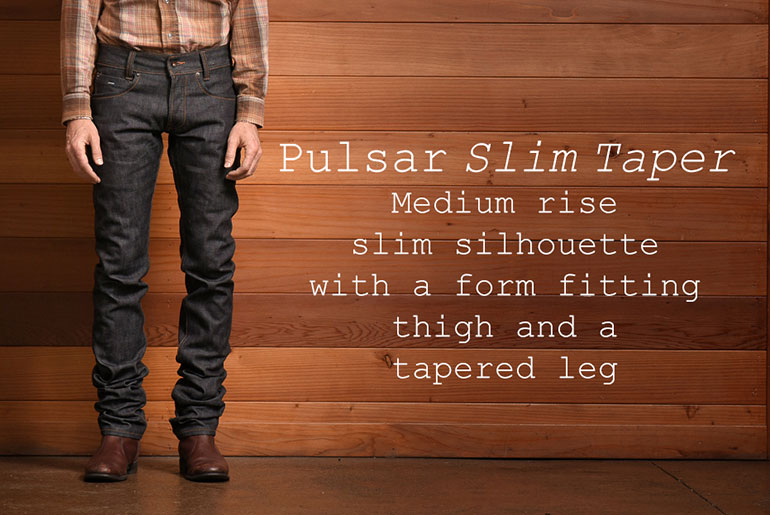
GAM (my slimmest cut) is a character from “The Space Giants”; an old children’s program broadcasted on local station KTVU during the late 70s, brought to us by the Sutro Tower! “Pulsar The Ultimate Man of Adventure”—Mattel Toy’s response to “The Six Million Dollar Man”–was one of my favorite action figures. From here, if all goes well, I plan on developing a line based on “The Micronauts”—the coolest toy collective of the 70s!
Furthermore, during the 70s, practically everything was brown, orange, gold, beige or olive. Turquoise jewelry was popular then as well. So I’d put together a thread color palette—orange & brown with turquoise bartacks—called “1978” which references this. I’d also gotten Pulsar for Christmas that year.
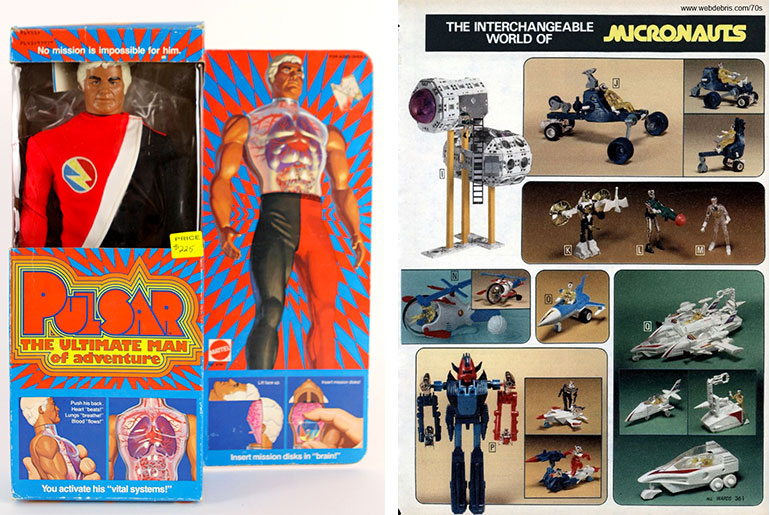
Two other sources of inspiration for oneculture date all the way back to the 70s – Pulsar The Ultimate Man of Adventure (image source: mearsonlineauctions.com) and the Micronauts. Image via WebDebris.
H: In your mind, what separates oneculture from all other brands? Why should people care about you?
MC: Exploring this very question in 2004 spurred an intense soul search, as I began delving into the mechanics of my own taste. I needed to understand why I like what I like in order to reproduce the same type of energy. Soul searching has helped me to develop my own perspective, hence, the difference between oneculture and the others—point of view.
Quality construction, fits and fabrics are ubiquitous within the world of dry denim. We all have it to one degree or another. Thus, in terms of quality, Pulsar and GAM are solid. However, whereas “work wear/Heritage/Americana” tends to form the inspirational basis for most other dry denim brands, oneculture offers a fresh, thoughtful alternative to the status quo.
I’m heavily influenced by great story tellers. Thus, my mission is to engage consumers with personal stories, told through the development of dry denim jeans and apparel. My buttons & trims have been carefully curated. And I go into development focused on being as clever as I can. I keep the age old adage in mind: “A penny for your thoughts”. I like to believe that my customers are not only paying for the fabric & fit, but also for the thought that went into creating the garment.
H: Are there any denim and non-denim brands or designers you admire? If so, who?
MC: There are many wonderful brands that I appreciate for one reason or another. A couple of my favorites are Pure Blue Japan and Iron Heart (they have awesome fabrics), and Rogue Territory. I like Rogue specifically because they make beautiful shirts and jackets. The designers have a stylish eye, and that sort of thing really speaks to what I’m about. Very inspiring!
H: What do you have planned for the remainder of this year and 2016?
MC: My plans for the remainder of the year are to simply keep spreading the word. I’ve been stumbling around the underground for a while now. Plus, I’ve been away for four years. oneculture is still very obscure. I have to keep pushing in order to let the market to know that it exists. With that said, thank you so much for the opportunity. This felt good!
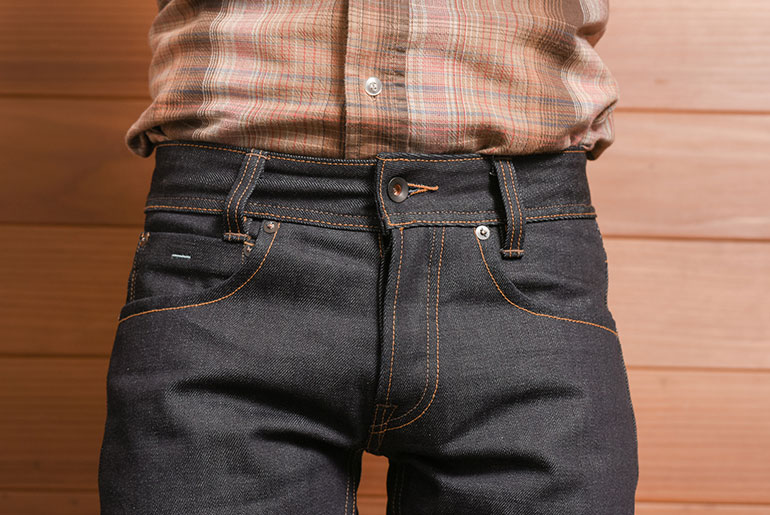
oneculture denim
To learn more about oneculture and the product line, visit their official website and follow them on Instagram at @houseofoneculture.
